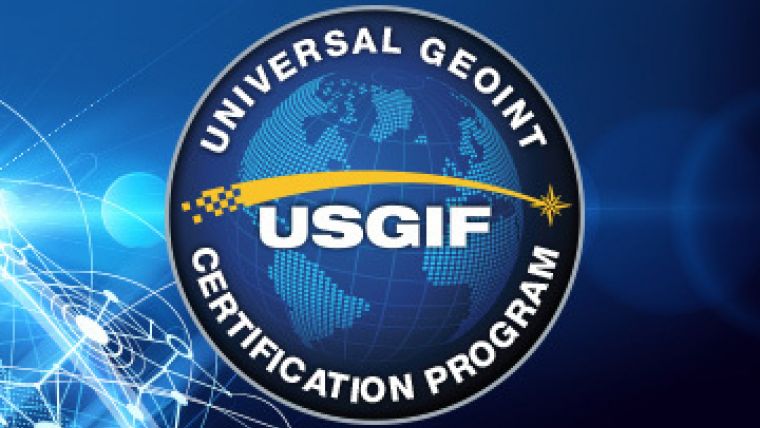Geospatial Intelligence - The Term that’s Changing the World
Around 2003, the U.S. intelligence and defense communities forced together remote sensing and imagery analysis with mapping and charting to create the National Imagery and Mapping Agency (NIMA). Though we realised the potential advantage, and despite NIMA performing admirably, it simply didn’t work as envisioned. Countless obstacles, primarily related to history and culture, and to a lesser extent, the technology not being good enough, was the ultimate downfall.
So we decided to rally NIMA’s workforce around a new vision for a collective future - without disregarding any of the respective heritage organisations and tradecraft. The agency needed a new name and a new operating framework.
Geospatial Intelligence
After much brainstorming, we settled on the term ‘geospatial intelligence’ (GEOINT), which allowed us to acknowledge the mapping and imagery collection and analysis legacies while providing something new, as well as a new moniker: the National Geospatial-Intelligence Agency (NGA).
But no one in government, industry, or academia knew what GEOINT actually was. We’d created an internal strategic communications campaign to bring the federal workforce along, but what about getting the rest of the world excited about this new term and new operational construct?
GEOINT Legacy
So in 2003, Geo-Intel was conceived and held in New Orleans. This highly collaborative effort was led by a group of government and industry executives who recognised the need to foster discussion around GEOINT. The growing public-private partnership led to the creation of a non-profit educational foundation - the United States Geospatial Intelligence Foundation (USGIF) - to foster the idea of GEOINT, to produce future events, and to germinate the education, training, and professional development to underpin the nascent GEOINT tradecraft.
With a very small number of staff and a strong cadre of volunteers, the Foundation has grown into the annual GEOINT Symposium with as many as 5,500 attendees and hundreds of exhibitors. Additionally, USGIF has eclipsed 250 member organisations, awarded more than US$1.1 million in scholarships, presented certificates to 800+ students from our 14 accredited academic programs, and developed the standards for a professional GEOINT certification program.
The GEOINT Revolution
As time passed, it became clear that technological advances were combining to create something we termed “The GEOINT Revolution”. This included the commoditisation of commercial remote sensing, powerful analytic software, ubiquitous precision geo-location data, far-reaching broadband, rapidly advancing processing power, affordable cloud storage, and advanced analytics and visualisation.
However, the government and military aren’t the only ones affected by the GEOINT Revolution. The expanding application of GIS, the ongoing maturation of location intelligence, and burgeoning business use cases across a number of verticals are sparking further imaginative approaches. Despite all this, the term ‘geospatial intelligence’ has not been widely adopted. Some are trying to stretch the definition of GIS or cram more into the concept of location intelligence than logically fits instead.
Ironically, the community is at an inflection point where we’re experiencing the inverse of the problem we faced in 2003. We have the near-explosive emergence of a powerful synergy in the commercial world at the nexus of remote sensing from phones to drones to space, geospatial and location information of all types and layers, data analytics, and data visualisation…but no term to describe it. So, USGIF proposes that geospatial intelligence is ready to take its place alongside business intelligence, artificial intelligence, and competitive intelligence in the business world.
Commercial and Consumer Marketplace
It’s time to talk about geospatial intelligence in the commercial and consumer marketplace. It’s time to share lessons learned and to crosswalk best practices. It’s time to develop GEOINT practitioners native to the commercial sector. It’s time for GEOINT to be taught in business programs at the undergraduate and graduate level. From precision agriculture, to oil and gas exploration, high-velocity logistics, marketing and retail, smart cities, the Internet of Things, and autonomous vehicles, GEOINT is a key competitive differentiator. Those who apply it will have a decided advantage.
USGIF will now lead the intellectual charge with respect to the use of the term geospatial intelligence and the establishment of its commercial applied framework. With this in mind, trajectoryXyzt will launch at the Barker Hangar in Santa Monica, Calif, 19–20 September. This first-of-its-kind event will lay the building blocks for commercial efforts at the convergence of geospatial intelligence. The event will blend keynotes, lightning talks, interviews, technology releases, and networking opportunities.
Taking geospatial intelligence to the commercial sector is an ambitious undertaking, and I hope you are excited about the possibilities of this event. For more information visit www.trajectoryxyzt.com
By Keith J. Masback, CEO, United States Geospatial Intelligence Foundation (USGIF)

Value staying current with geomatics?
Stay on the map with our expertly curated newsletters.
We provide educational insights, industry updates, and inspiring stories to help you learn, grow, and reach your full potential in your field. Don't miss out - subscribe today and ensure you're always informed, educated, and inspired.
Choose your newsletter(s)
























